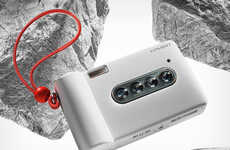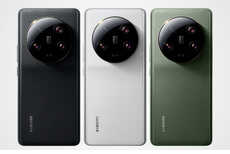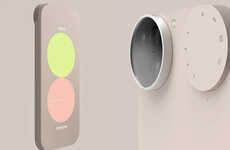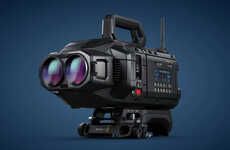
The Light L16 Camera Has 16 Lenses That Capture Images Simultaneously
Rahul Kalvapalle — October 9, 2015 — Tech
The L16 camera is a multi-aperture computational camera being offered by photography technology startup Light.
The camera derives its name from the fact that it is equipped with 16 individual lenses. However, unlike chunky DSLR cameras, this particular camera is about the size of a Nexus 6 smartphone even if it is about twice as thick.
When you snap a picture with this camera, all 16 lenses simultaneously capture photos at different focal lengths, allowing it to "capture more data in every shot". Light's special proprietary technology then distills all the data into a single 52-megapixel image. Users can adjust the focus, exposure and depth of field of images after they are captured.
It's pretty incredible that this kind of high-end functionality is now available in a camera this small and compact.
The camera derives its name from the fact that it is equipped with 16 individual lenses. However, unlike chunky DSLR cameras, this particular camera is about the size of a Nexus 6 smartphone even if it is about twice as thick.
When you snap a picture with this camera, all 16 lenses simultaneously capture photos at different focal lengths, allowing it to "capture more data in every shot". Light's special proprietary technology then distills all the data into a single 52-megapixel image. Users can adjust the focus, exposure and depth of field of images after they are captured.
It's pretty incredible that this kind of high-end functionality is now available in a camera this small and compact.
Trend Themes
1. Multi-aperture Cameras - Cameras with multiple lenses that capture images simultaneously are becoming increasingly popular, enabling higher resolutions and more control over photos.
2. Computational Photography - With the use of proprietary technology, computational photography is becoming more sophisticated and allowing for greater image manipulation and control.
3. Miniaturization of Technology - The miniaturization of technology has allowed for large, complex systems to be condensed into smaller, more portable devices, opening up new opportunities for innovation and product development.
Industry Implications
1. Photography - The photography industry is being disrupted by the development of new camera technology that allows for higher resolutions and more control over images.
2. Consumer Electronics - As miniaturization of technology continues to develop, new opportunities for innovation in the consumer electronics industry are emerging.
3. Artificial Intelligence/machine Learning - As computational photography technology improves, there is an opportunity for further integration of AI and machine learning to enhance image processing and manipulation, resulting in even greater control over photos.
2.2
Score
Popularity
Activity
Freshness























